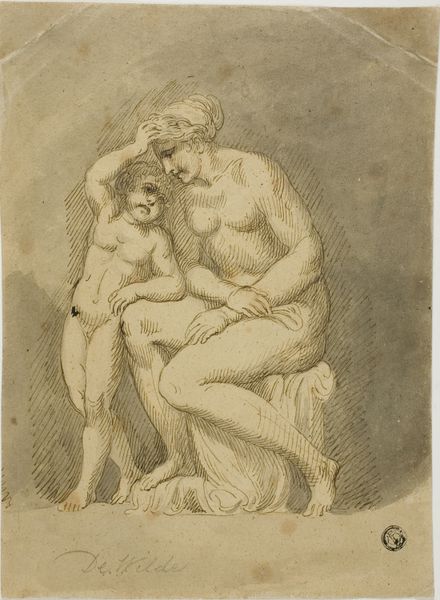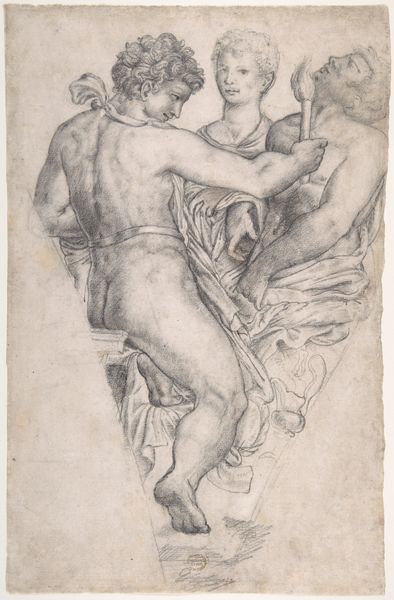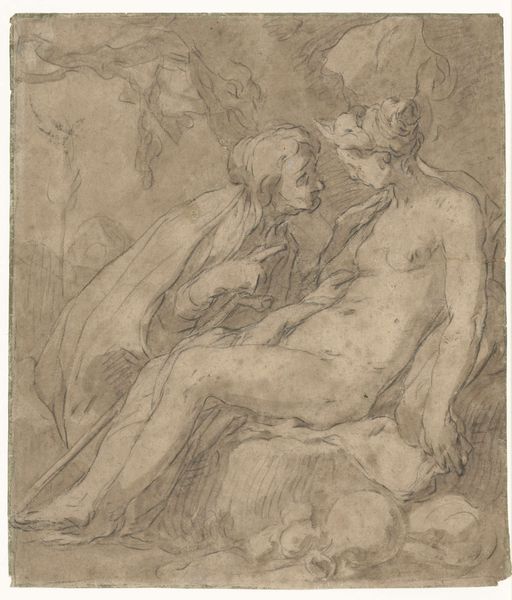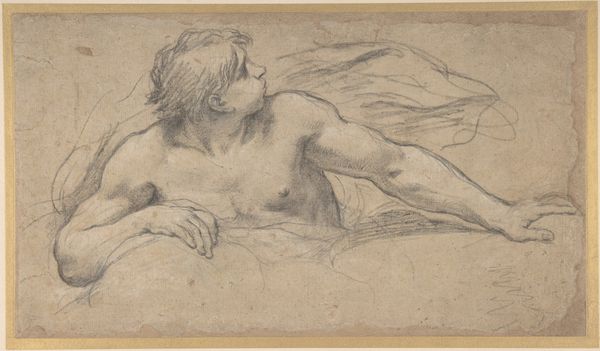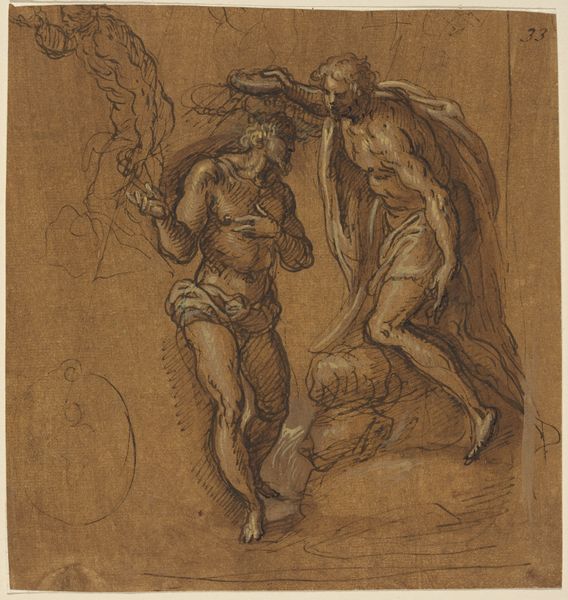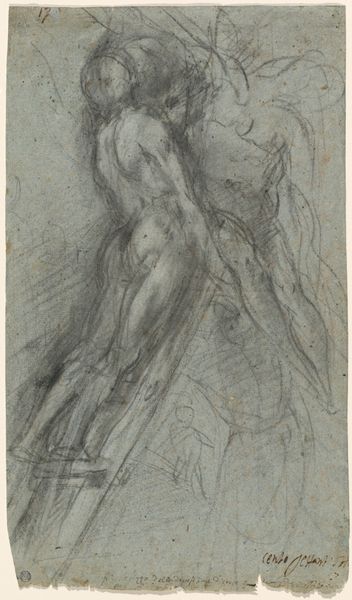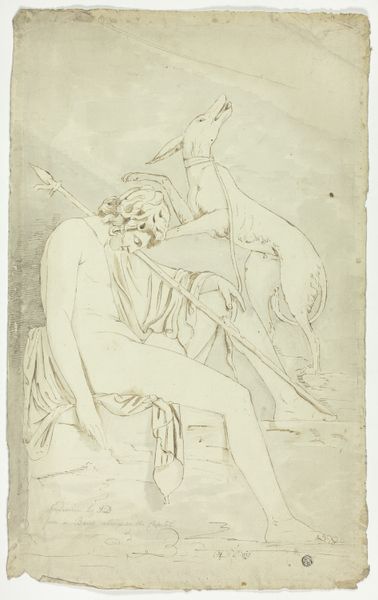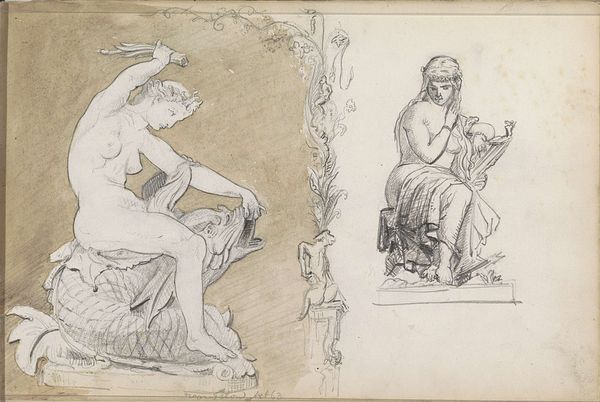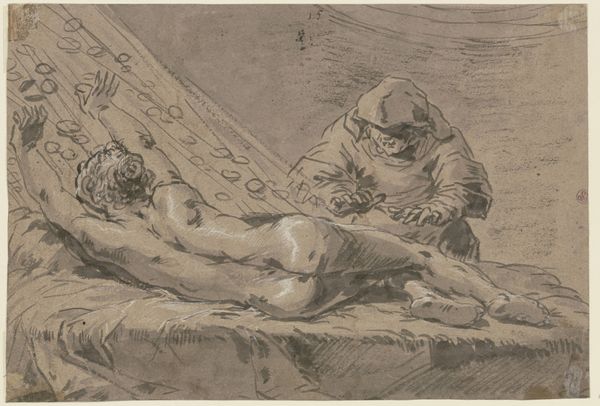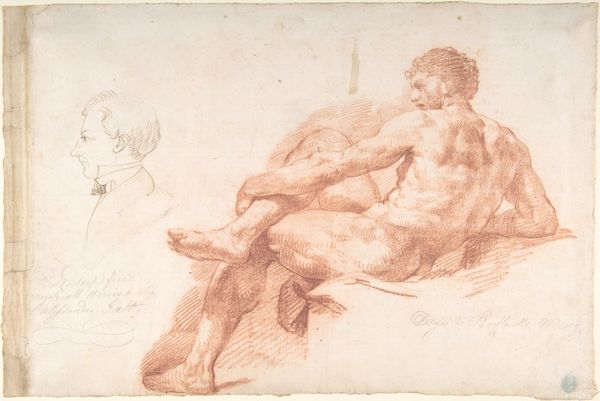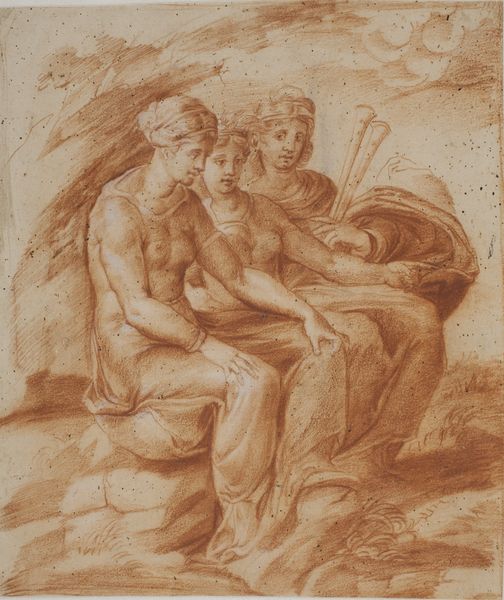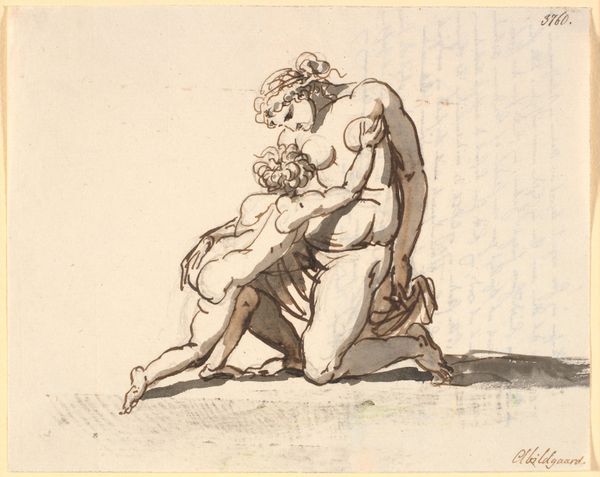
drawing, print, paper, ink, pen
#
drawing
# print
#
figuration
#
paper
#
ink
#
pencil drawing
#
pen
#
genre-painting
#
nude
#
erotic-art
Dimensions: 232 × 326 mm
Copyright: Public Domain
Editor: This is Abraham Janssens's "River God and a Nymph," an undated drawing made with pen and ink. I’m immediately struck by the figures' stillness—there's a sort of quiet, contained energy about them. What do you see in this piece, beyond the classical subject? Curator: The charged stillness you've noticed vibrates with echoes of desire, doesn’t it? Consider the river god, possibly a representation of masculine power, yet his gaze is fixed on the nymph, his posture solicitous. What about the hammer or axe poised above the male figure's head? What connotations might you associate with that specific symbol? Editor: I hadn't even considered the axe—power, certainly, but also perhaps creation or destruction? It adds a layer of…threat? Or maybe it’s transformative power—like reshaping the riverbed? Curator: Precisely. The tool speaks to a power that can both create and obliterate, influencing and even determining fates. This intersects with the nymph; her seeming placidity can mask immense strength – water is, after all, among the most powerful elements. The artist invites us to contemplate what cultural memories he may be invoking. Are they violent, erotic, or possibly celebratory? Editor: That's a completely different way of looking at it than I had before. Seeing those multiple possibilities—destruction, eroticism—shifts my whole understanding of their interaction. The tension then is not just about power, but also vulnerability. I can now see the potential conflict and seduction in this scene. Thank you for making me reconsider the potential visual memory encoded here. Curator: Indeed, and that inherent ambiguity ensures the piece continues to speak across time. Consider the layers of psychological weight embedded within the composition and symbolism. What do you make of this "cultural memory" going forward?
Comments
No comments
Be the first to comment and join the conversation on the ultimate creative platform.
